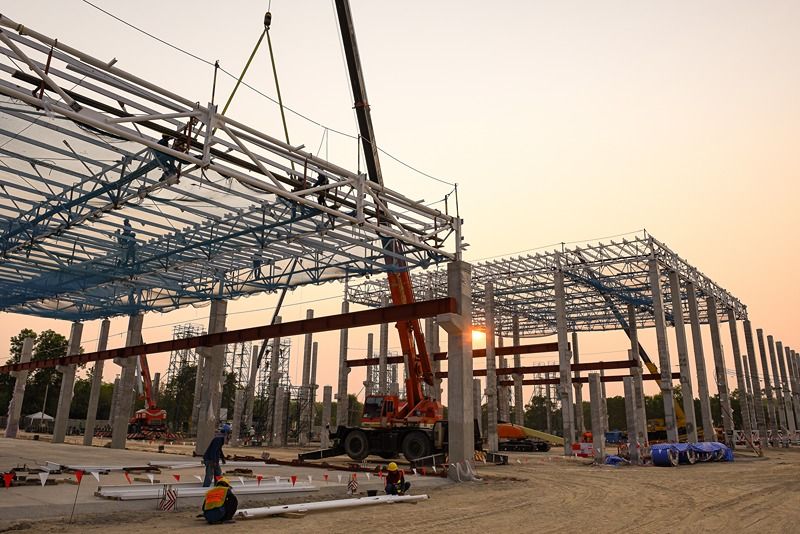In India's dynamic industrial landscape, micro, small and medium enterprises (MSMEs) are under constant pressure to scale quickly, manage costs and respond to market demands with agility. For these businesses, time is not merely a resource—it is a competitive advantage. Pre-engineered buildings (PEBs) have emerged as a transformative solution, offering significant reductions in construction timelines and enabling MSMEs to accelerate their operations.
This blog delves into ten critical ways PEBs help MSMEs save time, enhance efficiency and achieve faster returns on investment.
1. Off-site fabrication streamlines construction
PEBs are manufactured in controlled factory environments, allowing for simultaneous site preparation and component fabrication. This parallel processing significantly reduces the overall construction timeline. According to industry reports, PEBs can reduce construction time by up to 50% compared to traditional methods.
2. Standardised components ensure faster assembly
The use of standardised, pre-fabricated components in PEBs facilitates quick on-site assembly. This modular approach minimizes delays and accelerates project completion. Studies indicate that modular construction can be 20–50% faster than traditional building techniques.
3. Reduced dependence on skilled labour
PEBs require less on-site skilled labour, as most components are manufactured off-site. This reduces the time spent on recruiting and training specialised workers, further expediting the construction process.
4. Minimal weather-related delays
Since a significant portion of PEB construction occurs off-site, projects are less susceptible to weather disruptions. This ensures a more predictable and faster construction schedule.
5. Simplified foundation requirements
PEBs are lighter than traditional structures, necessitating simpler foundations. This not only reduces construction time but also lowers costs associated with foundation work.
6. Integrated design and engineering
PEBs benefit from integrated design and engineering processes, often utilising Building Information Modeling (BIM). This integration streamlines planning, reduces errors, and accelerates project timelines.
7. Efficient supply chain management
The prefabrication process allows for better control over the supply chain, ensuring timely delivery of components and reducing delays caused by material shortages.
8. Scalability for future expansion
PEBs are designed with scalability in mind, allowing MSMEs to expand their facilities quickly as their operations grow. This adaptability reduces the time required for future construction projects.
9. Reduced on-site waste and rework
Factory-controlled manufacturing ensures higher precision, resulting in less on-site waste and rework. This efficiency translates to faster project completion.
10. Faster regulatory approvals
Standardised designs and construction methods in PEBs often lead to quicker regulatory approvals, as they are more likely to meet compliance requirements. This expedites the overall construction timeline.
Conclusion
For MSMEs aiming to optimise their operations and reduce time-to-market, pre-engineered buildings offer a compelling solution. By significantly cutting down construction time, PEBs enable businesses to respond swiftly to market demands, scale efficiently and achieve faster returns on investment. As the industrial landscape continues to evolve, embracing PEBs could be a strategic move for MSMEs seeking growth and competitiveness.




 +91 7208055523
+91 7208055523
 Help & support
Help & support
